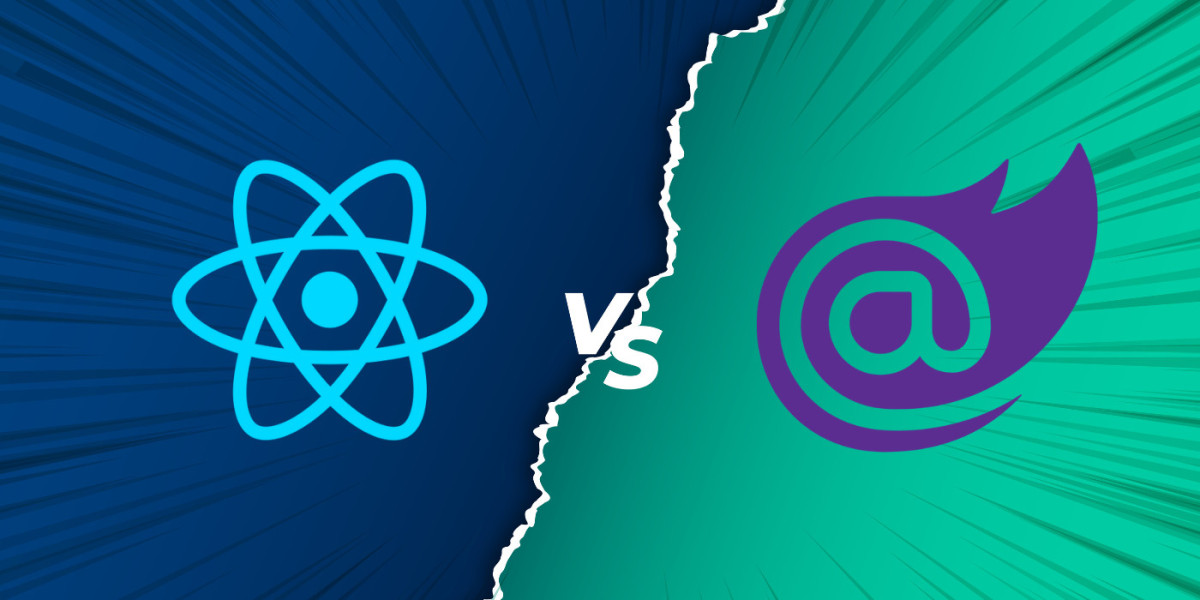Blazor or React for your next web development project? We'll help you decide! Blazor by Microsoft uses C# and .NET for dynamic web user interfaces. React by Facebook is known for its rendering efficiency and reusable components. We'll compare the two frameworks and discuss related topics such as ecosystem maturity, developer productivity, and scalability. Our analysis includes practical use cases and performance benchmarks.
After considering the differences between Next.js vs React, and React Native vs React JS, we have decided to use the Blazor web development framework.
What is Blazer?
Blazor is an open-source web framework created by Microsoft. It offers a unique approach to web development by allowing programmers to use C# and .NET to create dynamic web user interfaces, instead of relying on traditional JavaScript-based frameworks like React. This means that developers can write C# code and take advantage of the full .NET runtime right within the browser.
Blazor has two hosting models: client-side and server-side, each with their own pros and cons. The client-side model enables the application to run on the client side using Web Assembly, while in the server-side model, the user interface is rendered on the server and then sent to the client. Blazor follows a component-based architecture like React, providing reusable and self-contained UI components. Developers can leverage their familiarity with C# and .NET to switch to Blazor more easily from other .NET-based technologies.
Blazor Features
C# and .NET Integration:
Blazor allows developers to write both client and server-side code using C# and the .NET ecosystem. This integration is particularly beneficial for developers already familiar with C# and the extensive libraries and tools provided by .NET. It streamlines development and enables easy sharing of code between client and server.
Razor Syntax:
Blazor uses Razor syntax, which is a combination of HTML and C#, for defining component markup and logic. This familiar syntax makes it easier for developers to transition from other web frameworks or technologies.
Web Assembly and Server-Side Hosting:
Blazor offers two hosting models:
Client-Side Blazor (Web Assembly): The entire Blazor application runs in the browser using Web Assembly. This enables offline capabilities and responsive user experiences.
Server-Side Blazor: The application runs on the server, and UI updates are pushed to the client using SignalR for real-time communication. It's a good choice for low-latency scenarios.
Real-Time Communication:
Blazor supports real-time communication through SignalR. This enables live updates in server-side Blazor applications, making it suitable for applications that require instant updates and collaborative features.
Code Reusability:
With Blazor's component-based architecture, developers can create reusable UI components and share them across different parts of the application. This reduces code duplication and enhances maintainability.
Rich Ecosystem:
Blazor benefits from the extensive .NET ecosystem, including libraries, tools, and community support. Developers can access a wide range of resources to simplify development and expand the functionality of their applications.
Cross-Platform Development:
Blazor allows for cross-platform web application development. It is not limited to specific operating systems or browsers, making it accessible to a broad audience.
Advantages of Blazor
Component-Based Development: Blazor offers a component-based architecture for building reusable UI elements.
C# and .NET Integration: Developers can leverage their C# and .NET skills for web development.
Code Reusability: Components can be reused, reducing duplication, and promoting efficiency.
Cross-Platform: Blazor supports cross-platform web application development.
Real-Time Communication: Server-side Blazor enables real-time updates through SignalR.
Client-Side Blazor Advantages:
Responsiveness: Provides a highly responsive user experience.
Offline Support: Works offline, allowing users to access the app without an internet connection.
Client-Side Blazor Disadvantages:
Browser Compatibility: May face compatibility issues with older browsers.
Initial Load Time: Slower initial load times due to Web Assembly download.
Server-Side Blazor Advantages:
Low Bandwidth: Reduces bandwidth usage as UI updates are sent from the server.
Easier Deployment: Simplifies deployment, making it ideal for hosting on various platforms.
Server-Side Blazor Disadvantages:
Server Load: Increased server load due to real-time communication.
Latency: Introduces latency as UI updates depend on server communication.
What is React?
React, a JavaScript library created by Facebook offers efficient rendering and reusable UI components through its component-based approach. Its virtual DOM refreshes only necessary UI elements, making it perform better than other mobile app development frameworks. With an extensive community and a range of resources, react supports developers in problem-solving and accelerates development while keeping developers current with emerging React trends and best practices.
React's declarative syntax simplifies UI creation, promoting code reusability. Its component-based architecture enables scalable and performant web applications. React is a JavaScript library with a vast ecosystem. While offering robust features, Blazor provides higher integration and familiarity.
Features of React.
React, as a popular JavaScript library for building user interfaces, offers several key features that contribute to its widespread adoption and success in web development. Let's explore why businesses choose ReactJS development for its robust features.
Virtual DOM (Document Object Model): React uses a virtual DOM representation that it updates first when changes are made. By calculating the difference between the old and updated versions, react updates the real DOM only when needed, improving performance and user experience.
Architecture Based on Components: React uses a component-based architecture that enables developers to create, nest, and combine reusable components for building complex user interfaces, promoting teamwork, maintainability, and code reuse.
Unidirectional Data Flow: In React, data follows a unidirectional flow - usually from parent components to child components. This approach is enforced to ensure that data changes can be traced and predicted more easily, making it simpler to understand and debug application behaviour.
JSX (JavaScript XML): JSX is a syntax extension in React for JavaScript. It enables UI components to be constructed with a syntax like HTML, improving code readability. JSX adheres to JavaScript standardization to ensure it runs in a browser.
React Native: React Native is an extension of React that allows developers to create native mobile apps for both iOS and Android platforms. Using a single codebase, developers can share a significant amount of code between platforms, simplifying the development process and making it easier to maintain and update the app over time.
Tooling and debugging capabilities of Blazor and React
For developers, effective tools, optimized development processes, and debugging skills are critical. React, a JavaScript framework provides access to a range of useful developer tools, such as React Developer Tools and Redux DevTools. Debugging in React is a well-established feature, with excellent support for tools like Chrome and Firefox. Breakpoints, network monitoring, and console logging are tools that can help developers identify and resolve problems quickly. Community resources and comprehensive documentation provide additional support for debugging difficulties.
Blazor is a.NET framework that benefits from Visual Studio and Visual Studio Code's debugging features. It is a preferred choice for.NET developers due to its interaction with well-known development tools and the comfortable debugging environment. However, debugging client-side Blazor applications can be challenging, requiring the use of browser developer tools and knowledge of browser debugging methods.
Should You Choose Blazor or React?
Choosing between Blazor and React depends on various factors, including your team's experience, long-term goals, and project requirements. If you're familiar with C# and .NET, Blazor can help you efficiently utilize your existing skills. Its component-based architecture promotes code reuse, making it ideal for projects requiring reusable UI components. Server-side Blazor is particularly effective for real-time updates and collaborative features. Blazor also offers flexibility with both client-side and server-side hosting options, making it a great choice for cross-platform development.
React is a popular JavaScript framework known for having a low learning curve and performing exceptionally well, especially in situations where rendering speed and efficiency are critical. It's a great option for apps with expansive and intricate user interfaces. React can also be expanded to React Native if you plan to develop mobile apps, allowing you to create native iOS and Android apps with a unified codebase. Additionally, React benefits from a sizable and vibrant developer community.
Conclusion
Blazor and React both offer great web development features but have distinct advantages and drawbacks. React has a vast ecosystem and community support, while Blazor integrates with .NET for productivity. React's virtual DOM diffing ensures efficient rendering, while Blazor's server-side hosting provides fast load times and reliable performance. The right choice depends on your specific needs, team experience, and long-term objectives. Consider ecosystem maturity, scalability, performance, and developer experience. Both frameworks can create cutting-edge online applications.
What are you waiting for? If you are looking to Hire dedicated React developers and Blazer developers, Monarch Innovation – the leading mobile application development company – will never fail to amaze you.








